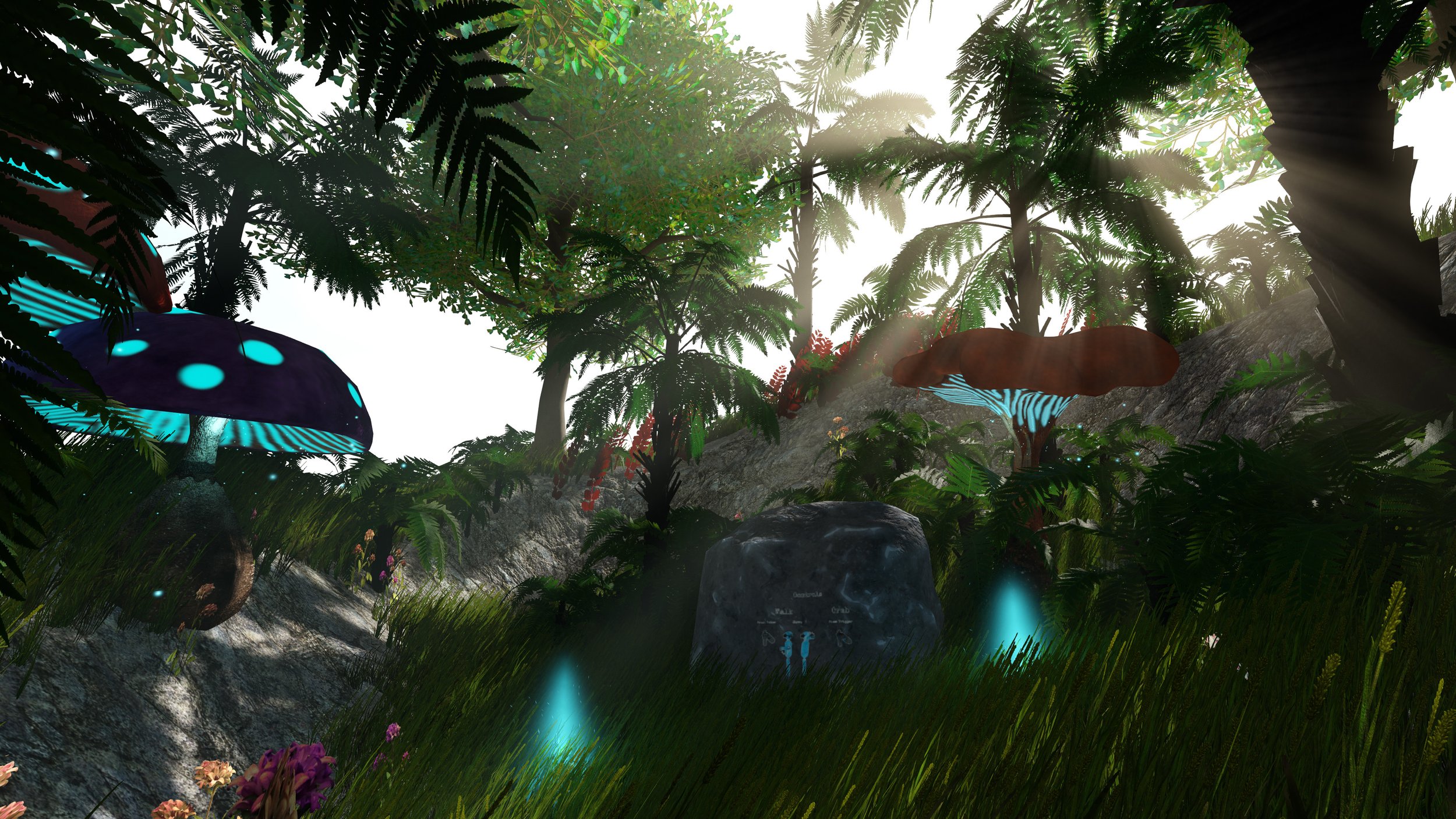In the Beginning was the Word…
Time Frame: 04.2019 - 07.2019
Roles: Programming, Directing, Lighting, VFX, Level Design, Marketing
Team Size: 8
Experience one of very few VR Games achieved in the beautiful CRYENGINE!
Dive into the beautiful magical forest world of this VR puzzle game and shape it to your liking!
Responsibilities
Implementing a roomscale VR Player controller
Collision with the environment to avoid the player moving through geometry
Locomotion via an arm swinging motion to reach places outside the physical play area
Creating a physical trigger system
Utilizing colliders to detect objects entering areas without these colliders actually interacting
Implementation of interactive object logic
Physical objects that can be grabbed and react realisticly when dropped or thrown
A thought system consisting of floating text that can be touched to execute an action after it has been unlocked by collecting key words
Implementing a system to display 3D text
Puzzle scripting
Designing and setting up lighting and VFX
A sunny and a rainy lighting scenario
Various gamplay and environmental particle and material effects
Designing and setting up the menu level
Creating marketing material
Coming up with the original pitch and directing the team to stay true to this original idea
Full Pitch
In the beginning was the word… and the author writing it. His words and thoughts shaped the world around him – until his writer’s block obstructed his path. Take on the role of the author and dive into the beautiful fantasy forest of this world. Use the words you find to shape this magical realm in order to overcome the writer’s block in this VR puzzle game.
You will encounter:
a beautiful, magical forest environment
4 Puzzles to solve
free locomotion in room-scale VR to let you explore the world you enter
Physical interaction with the world
Manipulation of the world by your author powers
Gallery



